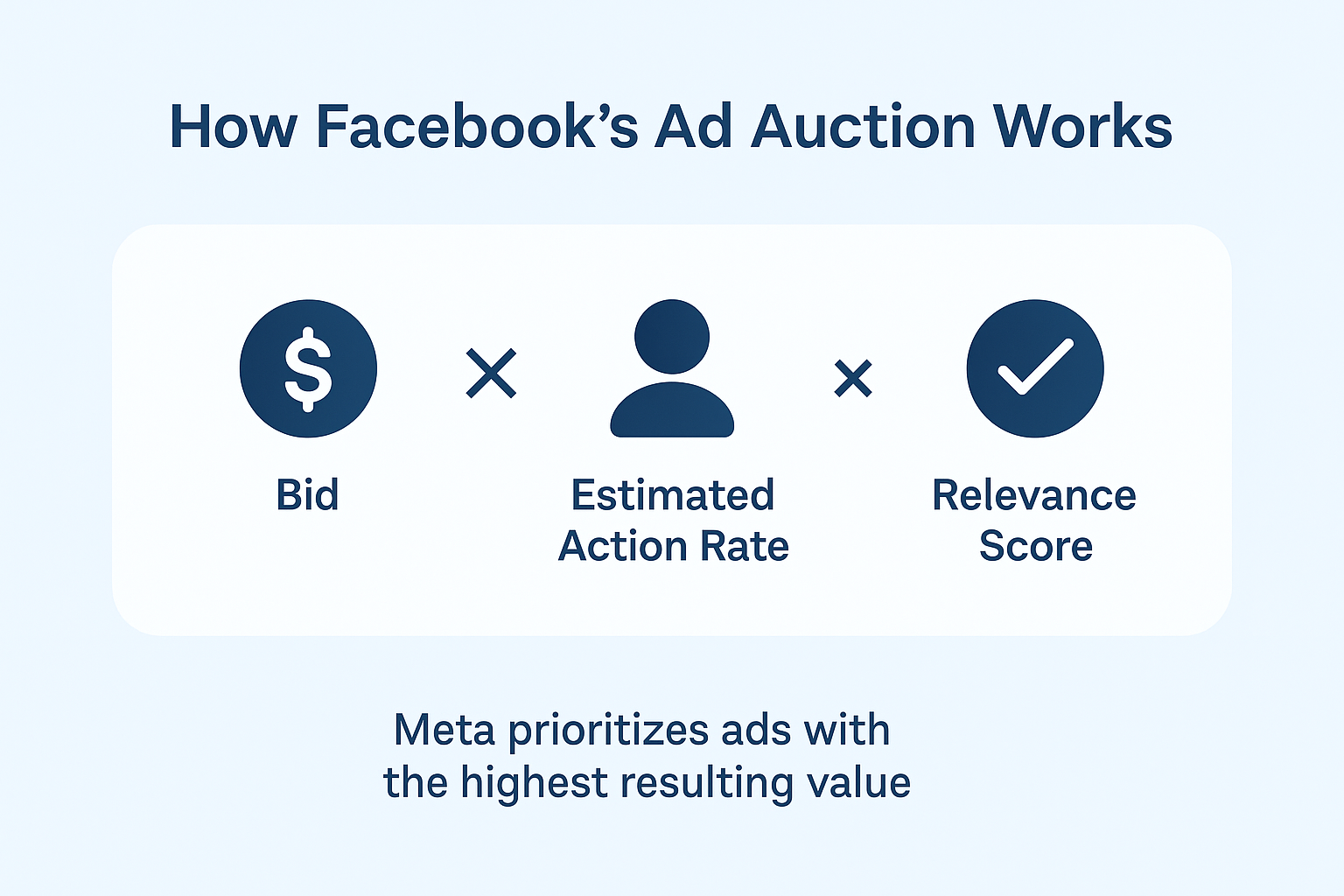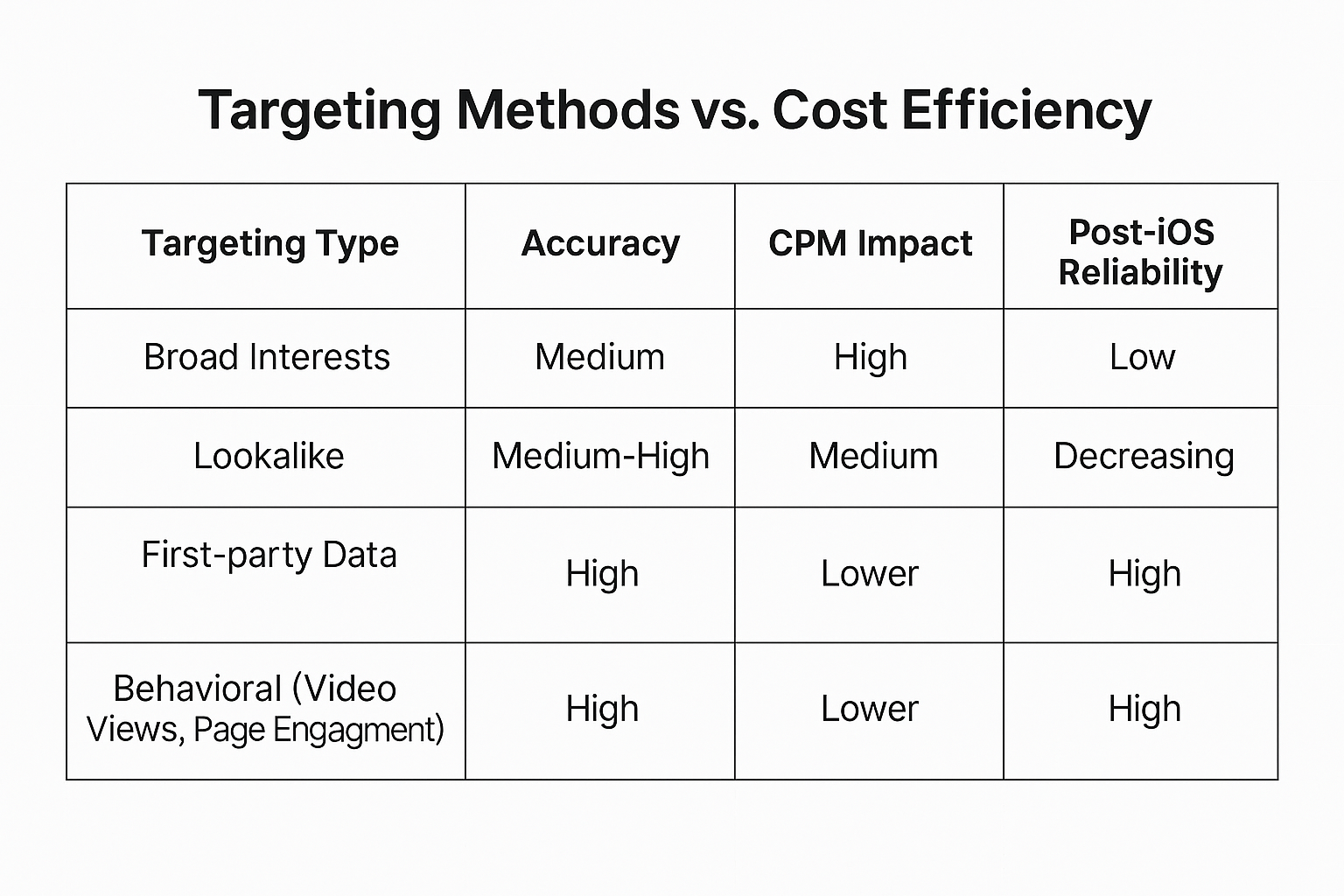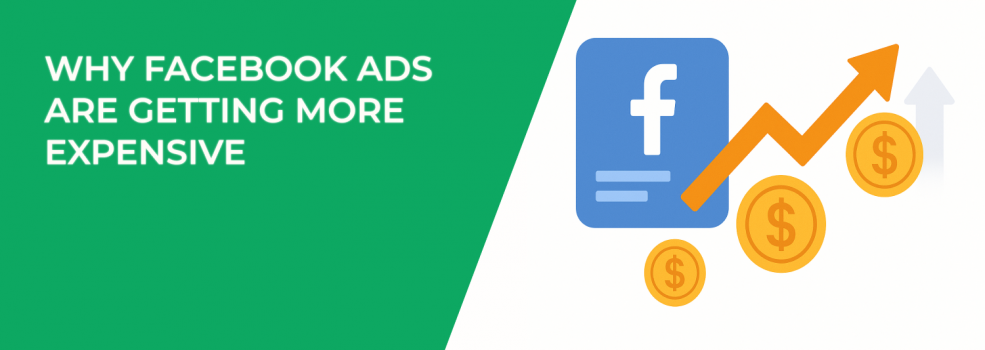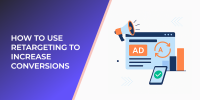Running ads on Facebook used to be one of the best-kept secrets in digital marketing. But if you’re still using the same budget and strategy you did a year or two ago, you’ve probably hit a wall.
The cost of Facebook ads has risen dramatically. CPMs are climbing. Clicks are more expensive. Conversions take longer.
So, what’s going on here? Why are Facebook ads getting more expensive — and is there a way to keep your campaigns profitable in 2025?
Let’s break it down.
1. Increased Competition Is Driving Up Bids
The Facebook Ads platform is auction-based. That means every time someone loads their feed, thousands of advertisers are competing for the same piece of attention.

And it’s not just small eCommerce stores anymore. Enterprise brands, media companies, DTC giants — they're all pushing harder into paid social.
What happens when demand increases and supply stays the same?
Costs go up. According to recent data, Meta’s CPMs rose sharply in Q3 2025, outpacing even Google Display in many sectors.
How to combat this:
-
Start your campaigns early, especially around holiday seasons.
-
Run ads during off-peak hours or days.
-
Use audience layering and exclusions to avoid overlapping with competitors.
Each of these steps helps lower your competition in the auction and can stretch your budget further.
And if you’re seeing messages like "Ad Set May Get Zero", it's likely your targeting and bidding strategy needs a serious update.
2. Meta’s Algorithm Favors Engagement Over Clicks
It’s not enough to show up. Your ad has to hold attention.
Meta wants people to stay on the platform. If your ads look like ads — and don't spark interaction — your costs rise.
What to improve:
-
Use native-style visuals, like UGC, selfie-style content, or meme-style creatives.
-
Tap into emotional drivers such as curiosity, urgency, or humor.
-
Focus on video ads that entertain or deliver value in the first 2 seconds.
These adjustments make your ads more engaging, which can reduce your CPM and improve your delivery.
Need help sourcing visuals that actually work? Try some of these AI text and image generators to quickly test new styles.
3. Privacy Changes Have Weakened Targeting
iOS updates, cookie restrictions, and GDPR have stripped Facebook of a lot of its tracking power.
This means your targeting might look the same in Ads Manager — but behind the scenes, it's far less precise. Lookalike audiences are broader. Interest targeting is fuzzier. And performance drops.

You can’t afford to rely solely on Meta’s native data anymore.
Smart targeting strategies:
-
Upload your customer lists to build high-quality custom audiences.
-
Use behavioral signals, such as video views, page engagement, or retention.
-
Expand with smarter targeting tools like LeadEnforce.
Each of these helps rebuild targeting precision, so you waste less budget on unqualified impressions.
Want to go deeper? Here’s how to fix Facebook ads that aren’t converting.
4. Budget Automation Is Creating a Level Playing Field (Which Isn’t Always Good)
Facebook’s Advantage+ and CBO tools have made media buying much easier. But there's a flip side:
Every advertiser now has access to decent performance out of the box. That means your competitors just got better, without needing to be experts.
It raises the floor, but not the ceiling.
To stay ahead:
-
Refine your offer positioning so it speaks to real pain points.
-
Run creative tests continuously and track performance data.
-
Strengthen your audience targeting skills beyond what automation allows.
These actions help you outmaneuver competitors who rely too heavily on default tools.
If you're only using Meta’s built-in tools and not going beyond, you're leaving ROI on the table.
5. Big Brands Are Soaking Up Premium Inventory
Let’s be real — big brands don’t always care about direct ROI. They’re buying ads to drive impressions, views, and brand recall.
And that type of spending is growing fast.
This means they’re gobbling up the high-quality placements in the feed, especially during:
-
Prime hours (e.g., evenings and weekends).
-
Seasonal windows (e.g., Q4, Black Friday, back-to-school).
-
Mobile-only formats such as Reels or Stories.
For smaller businesses and performance marketers, that means fighting for scraps unless you build around it.
Try this instead:
-
Focus on middle-funnel content, such as educational videos, testimonials, or interactive quizzes.
-
Use retargeting and warm audiences to offset cold traffic costs.
-
Build campaign structures that blend reach, engagement, and conversion.
These tactics help you sidestep high-cost competition and win attention more efficiently.
How to Keep Your Facebook Ads Profitable in 2025
You can’t stop ad prices from rising. But you can outsmart them.
Here’s what top-performing marketers are doing:
-
Segmenting audiences by funnel stage. Use cold, warm, and hot traffic flows to minimize waste.
-
Using Advantage+ only after manual testing. Let the algorithm scale, but not guess.
-
Testing creative more aggressively. Rotate formats, copy angles, and visual styles weekly.
-
Monitoring key signals. If you’re stuck in learning or getting "zero results" warnings, learn how to exit the learning phase quickly.
When done consistently, these strategies will help you squeeze more out of every dollar spent.
Final Thought: Ads Are More Expensive, But Smarter Strategies Win
There are always two kinds of advertisers:
-
The ones who keep pouring money into campaigns and wondering why costs keep rising.
-
The ones who adapt early and stay two steps ahead of the curve.
The Facebook ads game hasn’t become impossible — just more sophisticated. Get creative. Get data-driven. Build systems.
Because Facebook can still be one of the most profitable ad platforms available — if you know how to play it right.

